Instruction
What’s the most important factor in golf club fitting?

Trackman is a wonderful tool for instructors and club fitters alike. With more than 25 data parameters, it offers extensive insight into what’s really happening between the club and golf ball at impact, and why the golf ball flies how it does. That’s why Trackman is such a powerful part of fitting and instruction; it answers the question “What’s really going on?”
Here’s a look at the typical feedback gathered by just one shot on Trackman.
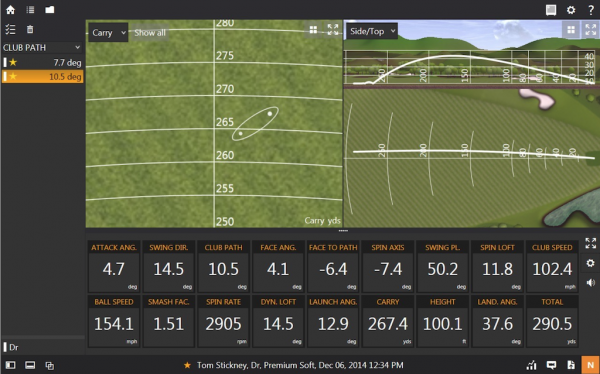
I was asked a great question the other day, however, which became the inspiration for this article. What is the most important Trackman data parameter in regards to fitting? Hmm… I had my ideas. As you might know, I’m a Top-100 teacher (Golf Magazine) and Trackman University Master Partner, but I am not a full-time fitter. So I asked a few of my fitter friends to see what they had to say.
Below are my opinions, as well as the input of a few club-fitting specialists on what they believe is most important factor in fitting.
My Thoughts
In my opinion, the most universally important data parameter on Trackman for fitting golfers is Landing Angle.
Trackman defines Landing Angle as the angle in which the ball impacts the ground.
There are many factors that go into creating landing angle, such as angle of attack, dynamic loft, spin rate, spin loft, launch angle, etc., and for this reason I feel that landing angle is the most important, and most telling for fitters.
My ideal fitting result would be to carry the driver as far as possible, yet still land the ball at an angle that’s flat enough to produce run out and cause the ball to “chase” as far as it can. That strategy will create the most distance on the majority of golf courses.
With the irons, I like to see as steep of a landing angle as possible so the ball will quickly stop on the green, without adding too much dynamic loft and/or spin, which will cause the ball to come up short of the target. Therefore, if I can fit someone into a certain landing angle with their irons based on their needs then I have created maximum distance, with maximium stopping power as well.
Here’s what the fitters say!
Kirk Oguri (@kirkoguri)
- Club Fitter at Pete’s Golf Shop
- Golf Digest Top-100 Clubfitter
“Personally, I like to audit ball speed off the face of the club … you can visually determine if the ball is flying farther, apexing around the correct height, or launching correctly, but you cannot “see” the ball’s speed off the face. If I can maximize the speed and the other factors “look” ok, then I know I am moving in the correct direction with my fit.”
Scott Felix (@felixclubworks)
- Felix Clubworks, club-fitter
- Golf Digest Top 100 Clubfitter
“I like to look at the Trackman “optimizer” screen as golfers are warming up. Now I know that this is not just one data point, but I can tell you that this data will let me know very quickly how close (or not close) the player is to their potential in a few shots. From that point, I determine the one number I need to adjust in order for them to play better. So I use the optimizer each time to pick my one number.”
Nick Arthur
- Club Performance Specialist
- Ely Callaway Tour Performance Center
“If I had to choose one parameter only, it would be backspin. The bulk of my clientele are tour pro’s and they have high ball speed. At those higher speeds, spin has a more direct correlation to total performance than launch angle. This is not necessarily true for golfers with lower swing speeds. Also, launch angle is easier to discern with the naked eye than backspin, so having Trackman’s measurement of that parameter isn’t as critical as the spin measurement.”
- LIKE102
- LEGIT24
- WOW10
- LOL6
- IDHT3
- FLOP15
- OB4
- SHANK36
Instruction
Clement: Laid-off or perfect fade? Across-the-line or perfect draw?

Some call the image on the left laid off, but if you are hitting a fade, this could be a perfect backswing for it! Same for across the line for a draw! Stop racking your brain with perceived mistakes and simply match backswing to shot shape!
- LIKE0
- LEGIT0
- WOW0
- LOL0
- IDHT0
- FLOP0
- OB0
- SHANK1
Instruction
The Wedge Guy: The easiest-to-learn golf basic

My golf learning began with this simple fact – if you don’t have a fundamentally sound hold on the golf club, it is practically impossible for your body to execute a fundamentally sound golf swing. I’m still a big believer that the golf swing is much easier to execute if you begin with the proper hold on the club.
As you might imagine, I come into contact with hundreds of golfers of all skill levels. And it is very rare to see a good player with a bad hold on the golf club. There are some exceptions, for sure, but they are very few and very far between, and they typically have beat so many balls with their poor grip that they’ve found a way to work around it.
The reality of biophysics is that the body moves only in certain ways – and the particulars of the way you hold the golf club can totally prevent a sound swing motion that allows the club to release properly through the impact zone. The wonderful thing is that anyone can learn how to put a fundamentally sound hold on the golf club, and you can practice it anywhere your hands are not otherwise engaged, like watching TV or just sitting and relaxing.
Whether you prefer an overlap, interlock or full-finger (not baseball!) grip on the club, the same fundamentals apply. Here are the major grip faults I see most often, in the order of the frequency:
Mis-aligned hands
By this I mean that the palms of the two hands are not parallel to each other. Too many golfers have a weak left hand and strong right, or vice versa. The easiest way to learn how to hold the club with your palms aligned properly is to grip a plain wooden ruler or yardstick. It forces the hands to align properly and shows you how that feels. If you grip and re-grip a yardstick several times, then grip a club, you’ll see that the learning curve is almost immediate.
The position of the grip in the upper/left hand
I also observe many golfers who have the butt of the grip too far into the heel pad of the upper hand (the left hand for right-handed players). It’s amazing how much easier it is to release the club through the ball if even 1/4-1/2″ of the butt is beyond the left heel pad. Try this yourself to see what I mean. Swing the club freely with just your left hand and notice the difference in its release from when you hold it at the end of the grip, versus gripping down even a half inch.
To help you really understand how this works, go to the range and hit shots with your five-iron gripped down a full inch to make the club the same length as your seven-iron. You will probably see an amazing shot shape difference, and likely not see as much distance loss as you would expect.
Too much lower (right) hand on the club
It seems like almost all golfers of 8-10 handicap or higher have the club too far into the palm of the lower hand, because that feels “good” if you are trying to control the path of the clubhead to the ball. But the golf swing is not an effort to hit at the ball – it is a swing of the club. The proper hold on the club has the grip underneath the pad at the base of the fingers. This will likely feel “weak” to you — like you cannot control the club like that. EXACTLY. You should not be trying to control the club with your lower/master hand.
Gripping too tightly
Nearly all golfers hold the club too tightly, which tenses up the forearms and prevents a proper release of the club through impact. In order for the club to move back and through properly, you must feel that the club is controlled by the last three fingers of the upper hand, and the middle two fingers of the lower hand. If you engage your thumbs and forefingers in “holding” the club, the result will almost always be a grip that is too tight. Try this for yourself. Hold the club in your upper hand only, and squeeze firmly with just the last three fingers, with the forefinger and thumb off the club entirely. You have good control, but your forearms are not tense. Then begin to squeeze down with your thumb and forefinger and observe the tensing of the entire forearm. This is the way we are made, so the key to preventing tenseness in the arms is to hold the club very lightly with the “pinchers” — the thumbs and forefingers.
So, those are what I believe are the four fundamentals of a good grip. Anyone can learn them in their home or office very quickly. There is no easier way to improve your ball striking consistency and add distance than giving more attention to the way you hold the golf club.
More from the Wedge Guy
- The Wedge Guy: Golf mastery begins with your wedge game
- The Wedge Guy: Why golf is 20 times harder than brain surgery
- The Wedge Guy: Musings on the golf ball rollback
- LIKE88
- LEGIT14
- WOW6
- LOL1
- IDHT0
- FLOP4
- OB1
- SHANK8
Instruction
Clement: Stop ripping off your swing with this drill!

Not the dreaded headcover under the armpit drill! As if your body is defective and can’t function by itself! Have you seen how incredible the human machine is with all the incredible feats of agility all kinds of athletes are accomplishing? You think your body is so defective (the good Lord is laughing his head off at you) that it needs a headcover tucked under the armpit so you can swing like T-Rex?
- LIKE0
- LEGIT3
- WOW2
- LOL0
- IDHT0
- FLOP0
- OB0
- SHANK2
-

 19th Hole2 weeks ago
19th Hole2 weeks agoJustin Thomas on the equipment choice of Scottie Scheffler that he thinks is ‘weird’
-

 19th Hole2 weeks ago
19th Hole2 weeks ago‘Absolutely crazy’ – Major champ lays into Patrick Cantlay over his decision on final hole of RBC Heritage
-

 19th Hole3 weeks ago
19th Hole3 weeks agoTwo star names reportedly blanked Jon Rahm all week at the Masters
-

 19th Hole2 weeks ago
19th Hole2 weeks agoReport: LIV Golf identifies latest star name they hope to sign to breakaway tour
-

 19th Hole3 weeks ago
19th Hole3 weeks agoNeal Shipley presser ends in awkward fashion after reporter claims Tiger handed him note on 8th fairway
-

 19th Hole2 weeks ago
19th Hole2 weeks agoBrandel Chamblee has ‘no doubt’ who started the McIlroy/LIV rumor and why
-

 19th Hole1 week ago
19th Hole1 week agoLET pro gives detailed financial breakdown of first week on tour…and the net result may shock you
-

 Equipment2 weeks ago
Equipment2 weeks agoJason Day on his recent switch into Srixon ZX5 and ZX7 Mk II irons

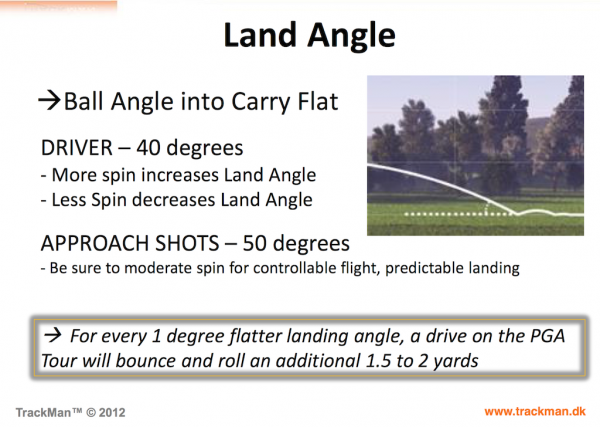
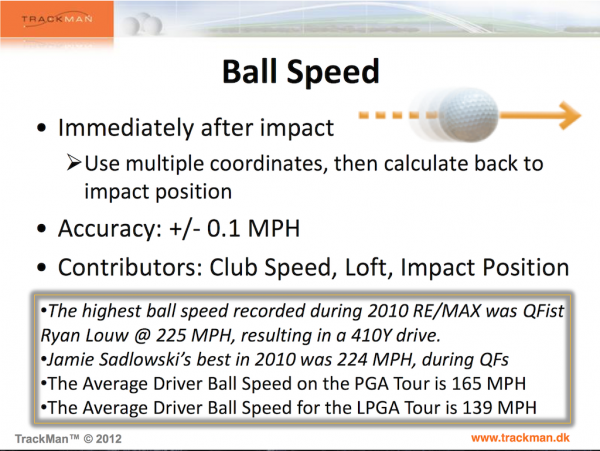
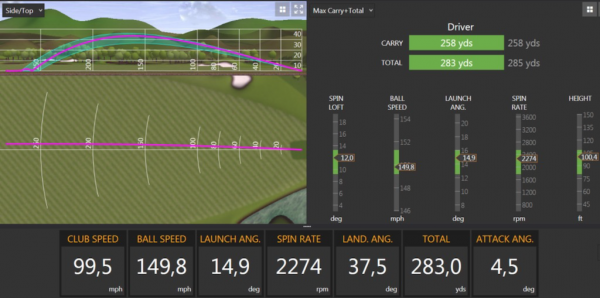
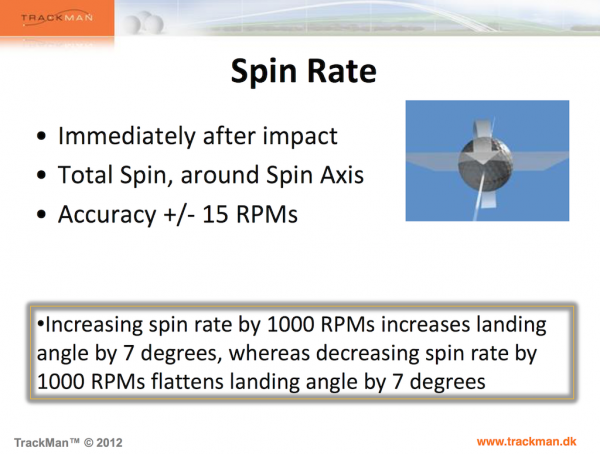

















Pingback: The Most Important Factor in Club Fitting | Honourable Society of Golf Fanatics
jackthegolfer
Dec 25, 2015 at 11:02 am
According to Ping, who know a thing or two about fitting, lie angle is most important. I personally think that there is more than one point that is important and this will depend on who you are fitting and what they want to achieve. The ball speed, spin and trajectory are all important, as is consistency and, for most players, finding a club or clubs that will be forgiving enough and that the player actually likes. Getting to this stage involves lie, loft, shaft, type and flex and grip. Probably listening to the wishes of the person in front of you may be the most important thing of all. At the end of the day they are the ones who are paying…
Dan Sueltz
Dec 24, 2015 at 6:14 pm
For higher handicap golfers, we fit primarily to smash factor (ball speed divided by club speed). This means we are getting the golfer the best possible performance out of their swing. From there, we look at launch angle, spin and maximum height to make sure the driver and fairway woods carry and roll the farthest and irons do not roll out too much.
For our lower handicap players, it is really all about spin rates and trajectory to make sure they get the most out of their equipment. Another big factor is distance gapping of their set.
Deuce
Dec 23, 2015 at 6:27 pm
Two most important aspects to a good fitting are:
A good fitter
A good non-egotistical customer without an attitude.
Both need to be patient, understanding and cordial.
What else would you need
ShankMaster
Dec 24, 2015 at 2:54 am
Great post!! I went in with my specs in mind ready to be fitted for some G-25’s, after about 10 swings I told the fitter (Roger Dunn store) I was “ready”, he said “no your not” he had me hit another 2 dozen with 3 different clubs. These were before and after specs:
Shaft flex- I “knew” I was stiff, nope! Regular
Length- + 1/4 inch, new 1/2 inch
Lie- 2 degrees flat, new 2 upright
Old 6 iron 165-170 carry , 15 yard average dispersion, new average 170-175 7-8 yard dispersion.
Doug
Dec 23, 2015 at 3:52 pm
I wish there was a place that could fit you, like a pro gets their clubs fit to their specs.
Robin English
Dec 23, 2015 at 6:19 pm
Try the Kingdom at Reynolds http://www.thekingdomatreynolds.com and get the same service for custom-fit and custom-built clubs as the Tour Professionals do. The facility is halfway between Atlanta and Augusta in Georgia.
Smitty
Dec 22, 2015 at 2:48 pm
I would believe all the fitting in the world can go south depending on how good a golfer you are and can repeat the same swing (contact, speed, angle of attack etc.) and let us not forget the ball we are playing that day, what a difference between a distance ball and a premium ball….
NM
Dec 24, 2015 at 1:50 pm
You might as well not play golf. Go fishing, you’ll be frustrated and disappointed less.
Christestrogen
Dec 19, 2015 at 10:09 am
I live in Texas….we absolutely soak our fairways every day or they die..
There is typically almost no roll in summer…
So, oddly enough, I am about 20 yards longer in winter when the fairways are dormant and not saturated..
Great article btw…
Dennis clark
Dec 18, 2015 at 6:14 pm
I don’t do a lot of fitting either simply because I can’t carry enough inventory to do it justice. The sheer number of shafts, heads, balls etc needed is prohibitive and without testing all combinations I’m not really doing it justice. Good article Tom.
You Pal
Jan 9, 2016 at 3:46 pm
Why not get a Mizuno fitting cart- they have all the heads available and all the shafts they offer (60+ Shafts)- they ship in like 3 days-
Cliff
Dec 18, 2015 at 8:31 am
I want my results to be accurate and repeatable. Don’t see how you can get there if you are only looking at one variable.
NM
Dec 24, 2015 at 1:51 pm
Ever heard of practice?
Cliff
Jan 5, 2016 at 4:25 pm
Ever hear of dispersion?
john
Dec 17, 2015 at 11:41 pm
fitting tour pros who already have the right clubs is easy lol
the most important part of a club fit is lie, length, weight and flex – fine tuning things like spin is totally an after thought for the majority of golfers.
.?????
Dec 20, 2015 at 9:51 pm
You couldn’t be more wrong.
kloyd0306
Dec 22, 2015 at 6:56 pm
John is correct. Fitting begins and ends with being able to make solid contact with a square club face. If the shaft is too short or long, the lie angles (irons) too flat or upright, the shaft is too flexible or too stiff and the shaft weight is too light or too heavy, the golfer is always going to have problems in achieving solid contact.
Trackman is a nice tool but it ONLY tells you what happened and has absolutely no idea if you are using the correct specs for YOU.
Everyone of us is different and if you truly believe that off the rack clubs fit everyone and anyone, then don’t bother with your adjustable car set, adjustable, steering wheel and adjustable mirrors. You won’t need any of those things and neither do you need to specify your shoe size when next you buy shoes.
Jay Turner
Dec 23, 2015 at 1:46 pm
In my 30+ years fitting golfers of all abilities I believe 3 things are most important with regard to iron fit: length, lie angle and grip size. When these variables are fitted properly to the individual, proper swing motion is rewarded with a good shot and sustainable improvement becomes possible.